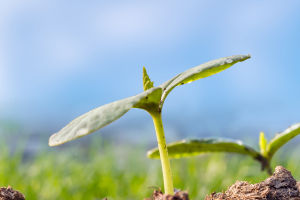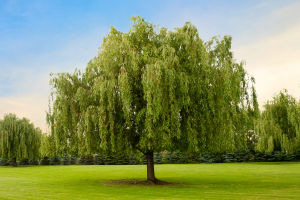Have you noticed how succulents are everywhere these days? From trendy cafes to office desks, they're popping up in homes and spaces all around the world.
These fascinating plants, with their thick, fleshy leaves that store water, have found a special place in our hearts. But what makes succulents so appealing?
Let's dive into what makes them so popular, and most importantly, how we can take care of them to keep them thriving.
The Allure of Succulents
Succulents have quickly become a go-to plant for those of us with busy lives, and it's not hard to see why. One of their main attractions is how low-maintenance they are. They can survive with minimal attention, making them ideal for beginners, busy professionals, or people who travel frequently. Unlike other plants that require regular watering and constant care, succulents thrive on neglect.
Their unique ability to store water in their thick, fleshy leaves allows them to withstand periods of drought and dry conditions, making them incredibly resilient.
In addition, succulents come in a wide variety of shapes, sizes, and colors, from the small, round Echeveria to the tall and spiky Aloe Vera. Their diverse appearance makes them perfect for decorating different types of spaces, adding a touch of nature to any room. Whether you want a tiny desktop companion or a large statement piece for your living room, succulents have something to offer.
How to Care for Succulents
Now that we understand why succulents are so popular, let's get into the nitty-gritty of how we can keep them happy and healthy. Don't worry – taking care of succulents is much easier than you might think! With a few simple tips, your succulents will thrive in no time.
1. Light Requirements
Succulents love sunlight, so it's important to place them in a bright location. Ideally, they should get around 6 hours of indirect sunlight per day. A south-facing window or a well-lit balcony can be perfect spots for them. However, be cautious not to place them in direct, harsh sunlight for too long, as this could cause them to burn.
2. Watering: Less is More
One of the most common mistakes when caring for succulents is overwatering. These plants are designed to store water, so they don't need frequent watering. In fact, overwatering can lead to root rot, which is often fatal for succulents. A general rule of thumb is to let the soil dry out completely before watering again. During the winter months, succulents require even less water, as they go into a dormant state.
3. Proper Drainage
Make sure your succulent is planted in a pot with drainage holes. This is crucial because it allows excess water to escape, preventing water from pooling at the bottom of the pot. You can use a well-draining potting mix, specifically designed for cacti and succulents, to ensure proper drainage and aeration around the roots.
4. Temperature and Humidity
Succulents prefer temperatures ranging from 60°F to 80°F (15°C to 27°C), so they're quite adaptable to indoor conditions. They thrive in dry air, making them perfect for homes with low humidity. Keep them away from humid environments like bathrooms or kitchens, as too much moisture can cause them to rot.
5. Fertilizing
Succulents are light feeders, meaning they don't require much fertilizer. You can feed them with a diluted, balanced fertilizer during their active growing season (spring and summer), but only once every month or so. During the fall and winter, when they're dormant, they don't need any fertilizer.
Common Types of Succulents and Their Unique Traits
There are so many different types of succulents to choose from, each with its own unique characteristics. Here are a few popular ones:
1. Aloe Vera
Known for its medicinal properties, Aloe Vera is a popular succulent. Its thick, fleshy leaves are packed with a soothing gel that can be used to treat burns and skin irritations. Aloe Vera thrives in bright, indirect sunlight and requires minimal water.
2. Echeveria
Echeveria is a rosette-shaped succulent with vibrant colors that range from green to pink, purple, and even blue. These plants are a bit more delicate than others but still easy to care for. They need bright light and slightly more water than some other succulents, but are still quite drought-tolerant.
3. Jade Plant (Crassula Ovata)
Often referred to as the "money tree," the Jade plant is a hardy succulent with thick, shiny leaves. It's believed to bring good luck and prosperity. This plant grows slowly and can live for many years if properly cared for.
4. Snake Plant (Sansevieria)
Snake plants are practically indestructible! With their upright, sword-like leaves, they can grow in a variety of light conditions and don't require much water. They're an excellent choice for those who are just starting their succulent journey.
Conclusion: Embrace the Beauty of Succulents
Succulents are a fantastic addition to any home. They bring beauty, low maintenance, and a touch of nature to our living spaces. Whether you're a seasoned plant parent or a beginner, succulents are the perfect plant to start with. By following some simple care tips, you can enjoy these fascinating plants for years to come.
Have you tried caring for succulents before? Share your experiences with us in the comments below!


